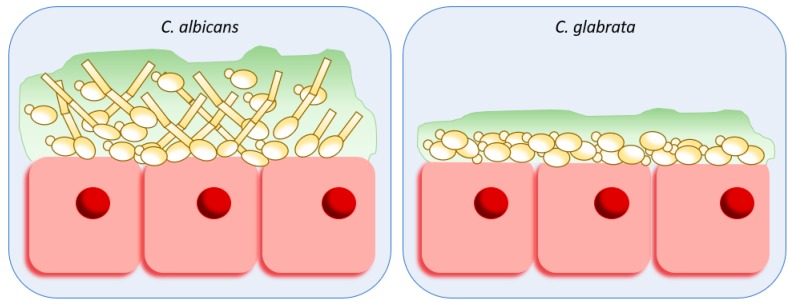Figure 2.
Schematic representation of C. albicans and C. glabrata biofilm formation. C. albicans forms thicker biofilms, with much more biomass in the end of biofilm formation and produces more extracellular matrix than C. glabrata. C. albicans mature biofilms are composed by a dense network of pseudohyphae, hyphae, and yeast cells, whereas C. glabrata biofilms are composed by compact yeast cells only, forming a thin but dense biofilm.

